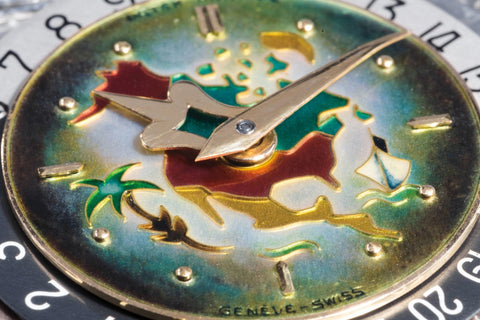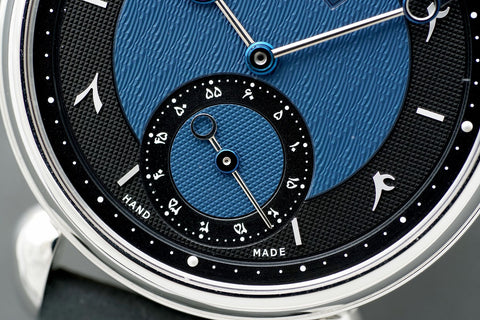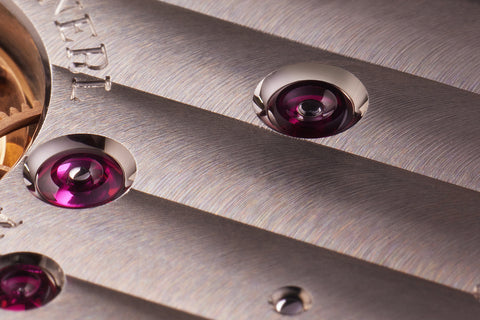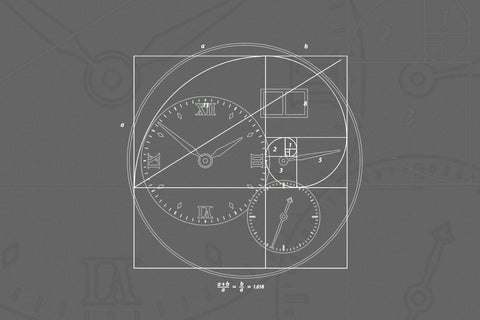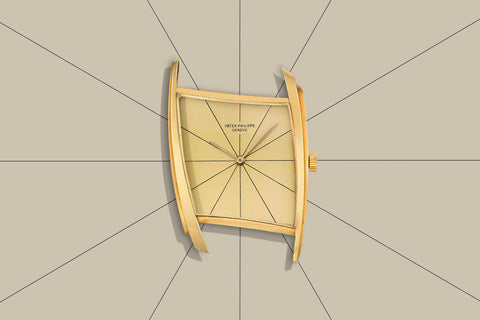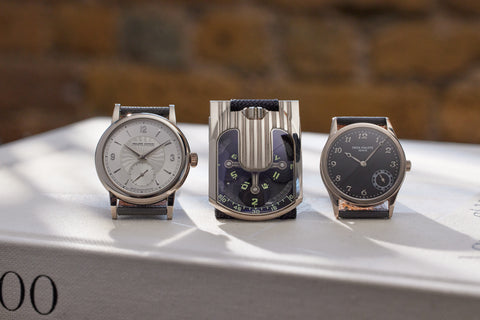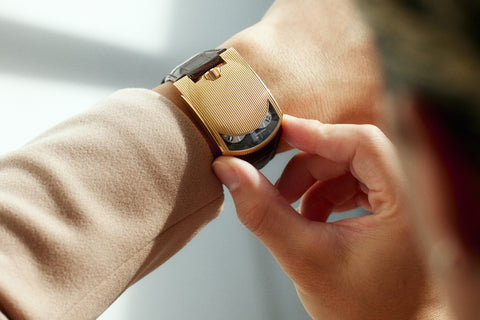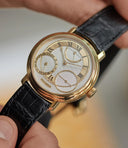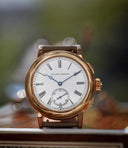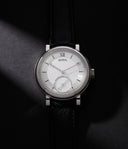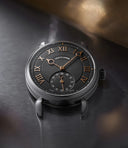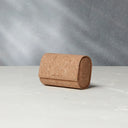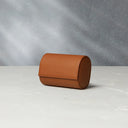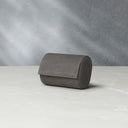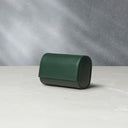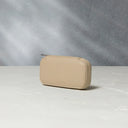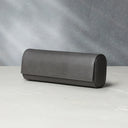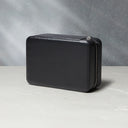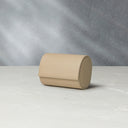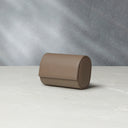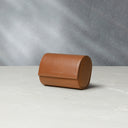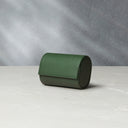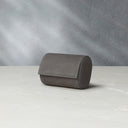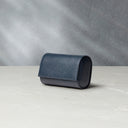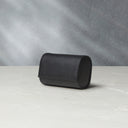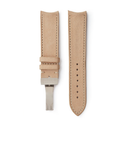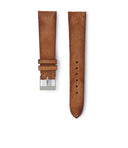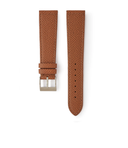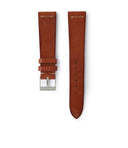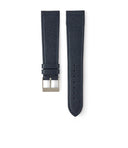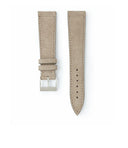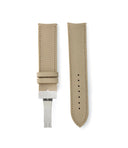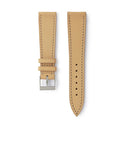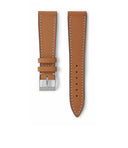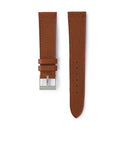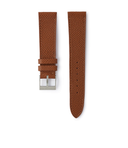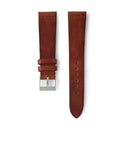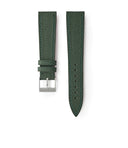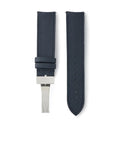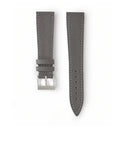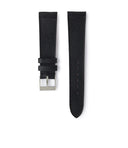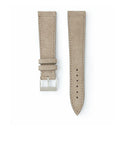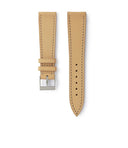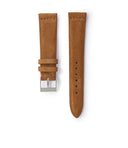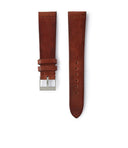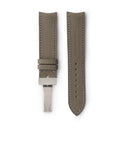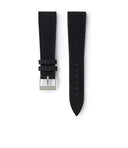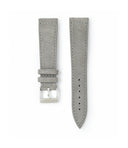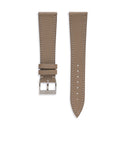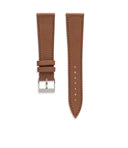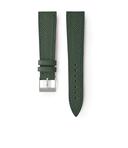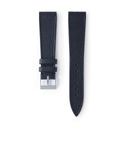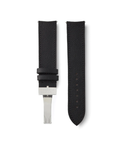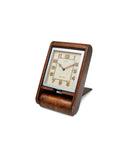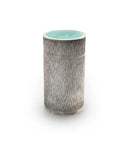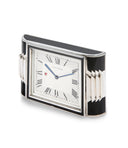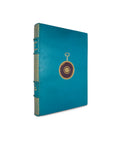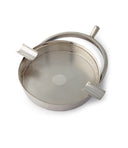Early independent
Raúl Pagès was considering an education in art when on the suggestion of his brother, he enrolled in the watchmaking school in Le Locle. Pagès’ first job was at the restoration house of Michel Parmigiani, a formative experience that he credits with instilling in him a deep respect for the craft and the history that informs it. During this time, he worked on some of the most historically significant pieces that live in the Sandoz collection and adorn the displays at the Patek Philippe Museum. His first piece as an independent, the incredible Tortue automaton he presented to the world in 2013, was an homage to ones by masters such Jacquet Droz.
He followed this with his first watch, the Soberly Onyx, that presented his aesthetic inspired by the Bauhaus school and giants of Modernist architecture such as Charles-Édouard Jeanneret, better known as Le Corbusier. Produced in a series of just 10 pieces, it was underpinned by a vintage Cyma calibre, extensively reworked and decorated by hand, with a balance wheel of Pagés' own design.
Even while creating the Soberly Onyx, Pagés was working nights on the design of his new watch. The result of his efforts is the Régulateur à Détente RP1, first revealed in 2022. It presented his innovation on the detent escapement paired with a restrained case and architectural dial that only reveal their many details on closer inspection. Its refreshing but sparing use of colour was typical of Bauhaus principles, as it was unusual to the context of independent watchmaking. The Régulateur à Détente RP1, produced in a series of 20 pieces, won the inaugural Louis Vuitton Watch Prize for Independent Creatives in 2024.
The partnership
This example of the Régulateur à Détente RP1, which stands apart from the serially-produced examples, is one of just three, each with a unique colourway. It expands on Pagès visual vernacular, with help from celebrated enamel artist Anita Porchet. The latter has built a long career intricately decorating dials and cases for brands such as Patek Philippe, Vacheron Constantin, Piaget and Faberge. The collaboration between an independent watchmaker and one of the best-known enamellists came with no preconditions – they jointly worked on honing the colour science, identifying shades that would best complement each other.
The case
The stainless-steel case measures 38.5mm across and stands 10.2mm tall. The midcase, horizontally satinated, is sandwiched by rounded bezels on the dial and movement side, both highly polished. The lugs, each secured to the midcase by two screws, curve down gently. They are polished on top and satinated in profile. It is satisfying, both visually and to the touch, and is the perfectly suited to the case and movement it holds within.
Unique colourway
The dial – with its regulateur layout inspired by marine chronometres – is five-part in its construction and crafted on a base of solid 18k gold. The larger expanse is a pearl grey, created from a naturally occurring shade of enamel. It wears a matte texture that serves to visually distance it from the subsidiary registers. Framing it is a black applied chapter, its serrated detail serving as the graduated minutes.
At the top, the smaller of the two registers, displays the hour of the day across a 12-part graduated scale. The scale is printed on a raised ring, brushed on top with chamfered edges. While in the regular production watch it matches the colour of the dial, in this example, it is a smooth, bright yellow inspired by shade 4320 W from Le Corbusier’s Architectural Polychromy of 1959.
To its south is the larger seconds register, recessed into the dial, serving as a visual counterweight. The form of the two subdials brings to mind the architecture of Brasilia’s Palácio do Congresso Nacional by celebrated Modernist architect Oscar Niemeyar. This register, a pale blue in serially produced examples, also wears the bright yellow base, with a chamfered rim running around it. It has a chemin de fer track along which the 60 seconds are graduated in black.
The detent
The movement, of Pagès’ design, is equally impressive. At its heart is the detent escapement that gives the watch its name. Invented by Pierre Le Roy in the 18th century and subsequently improved upon by the likes of John Arnold and Thomas Earnshaw, the escapement’s efficiency lies not just in the fact that it directly interacts with the balance wheel, it minimises contact with the escape wheel. In a cycle that starts with each swing of the balance wheel, while the Swiss lever features two impulses with twin pallets locking and unlocking the escape wheel, the detent escapement does with just one impulse, halving the amount of interference with the escape wheel, and also minimising sliding friction from such interactions. In the case of the RP1, since the detent escapement releases the balance once every two beats – at almost half the rate of a Swiss lever – the seconds hand advances only about every two and a half seconds.
While today the detent escapement might no longer offer the chronometric advantage it once did over in-line or Swiss lever escapements, incorporating it into a wristwatch suited to everyday wear was still a challenge. Pagès innovation to the design was to include a safety roller on the balance wheel staff. This is aimed at greater shock tolerance, so a sudden knock doesn’t cause the detent to release the escape wheel in an uncontrolled fashion, thereby hampering chronometry. By this advancement of the detent, Pagès has added his name to the illustrious list that includes names such as Earnshaw, Le Roy and Arnold.
The impressive mechanics are matched by the fine quality of hand-finishing on the movement. The skeletonised bridge that anchors the escapement is highly polished, as is the detent itself. The detent stem has a solid gold counterweight. The finger-style bridge is also similarly skeletonised and polished, visually tying the two components together. The jewel that anchors the detent is ensconced in a gold chaton, as is the one that holds the balance wheel.
The rest of the movement – baseplate and bridges, as well as the bridge securing the escape wheel – wears a frosted finish. The bridges are artfully designed to complement each other’s form and the edges wear beautiful anglage, obviously done by hand. The visible jewels and screws have mirror-polished countersinks.
The context
The wealth of detail on the case and the historically minded escapement at the heart of the original calibre sit perfectly with the raw, brutalist aspect of the dial, giving the RP1 visual complexity that is only heightened with strategic addition of shades of enamel. Together it presents a coherent and wholly original package from a long-standing independent watchmaker. The watch also represents a rare association between an award-winning independent watchmaker and one of the best-known enamellists working today. While we have had the opportunity to offer one for sale, all three examples are now spoken for.
If sold within the United Kingdom, this Raúl Pagès Régulateur à Détente RP1 will be subject to 20% VAT









